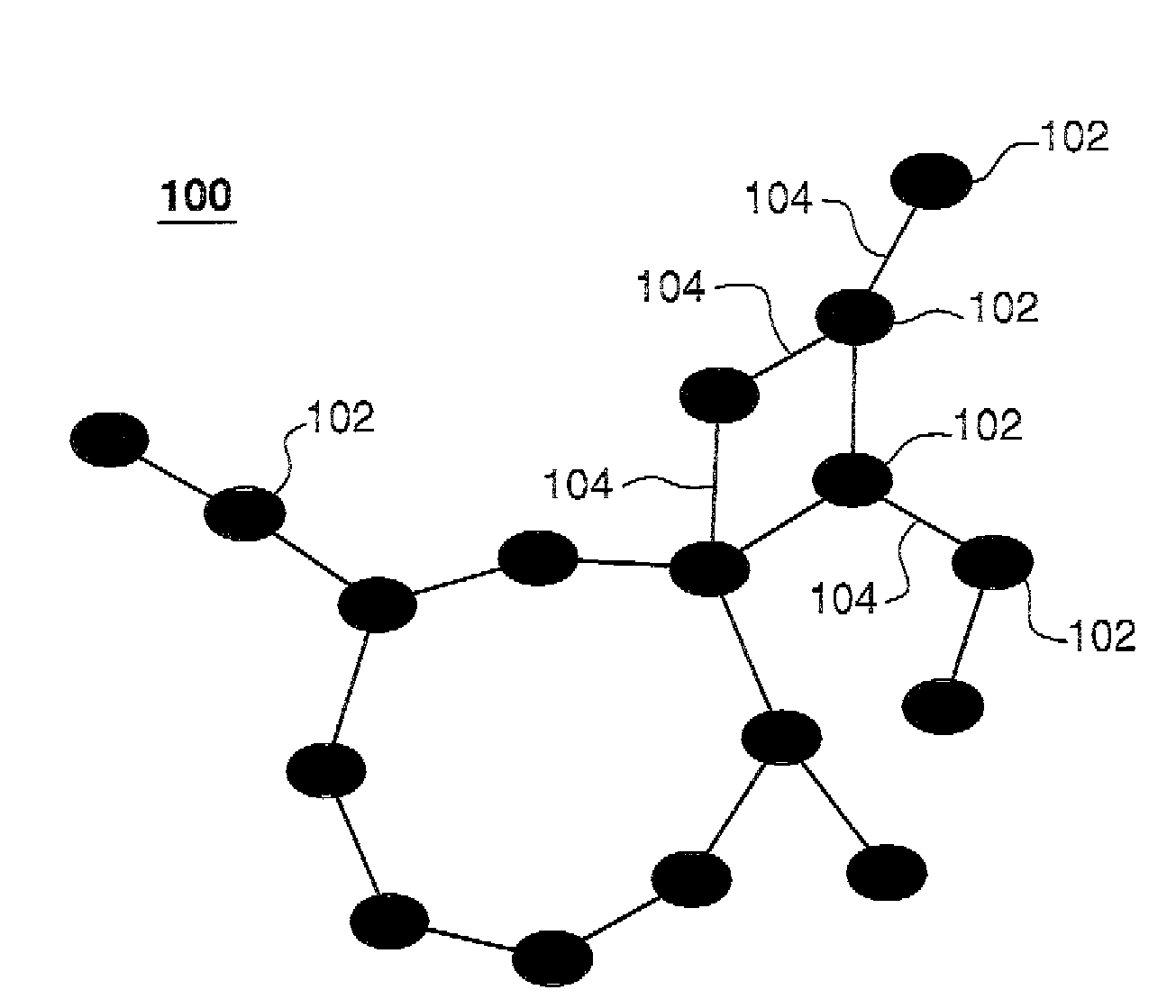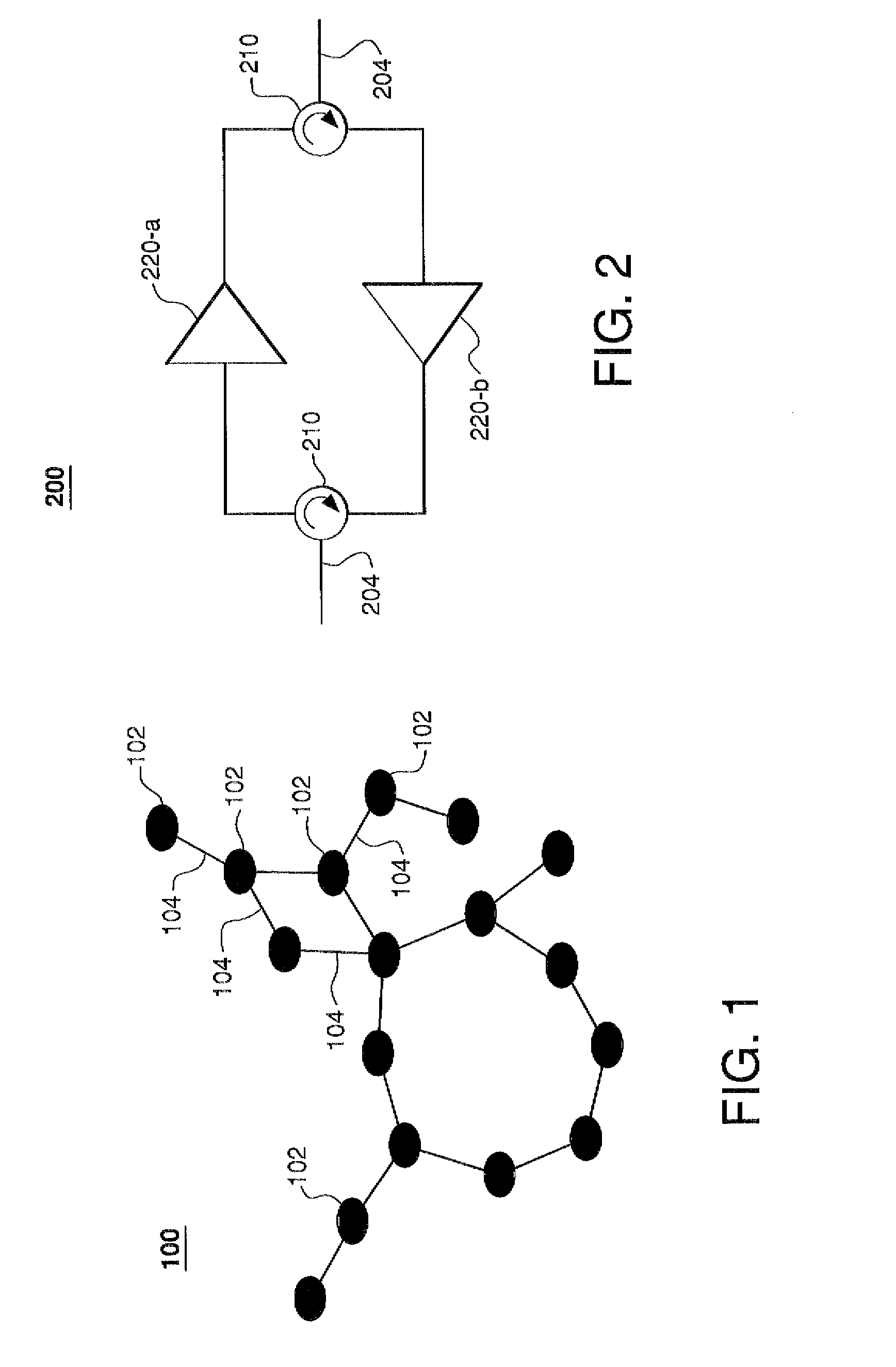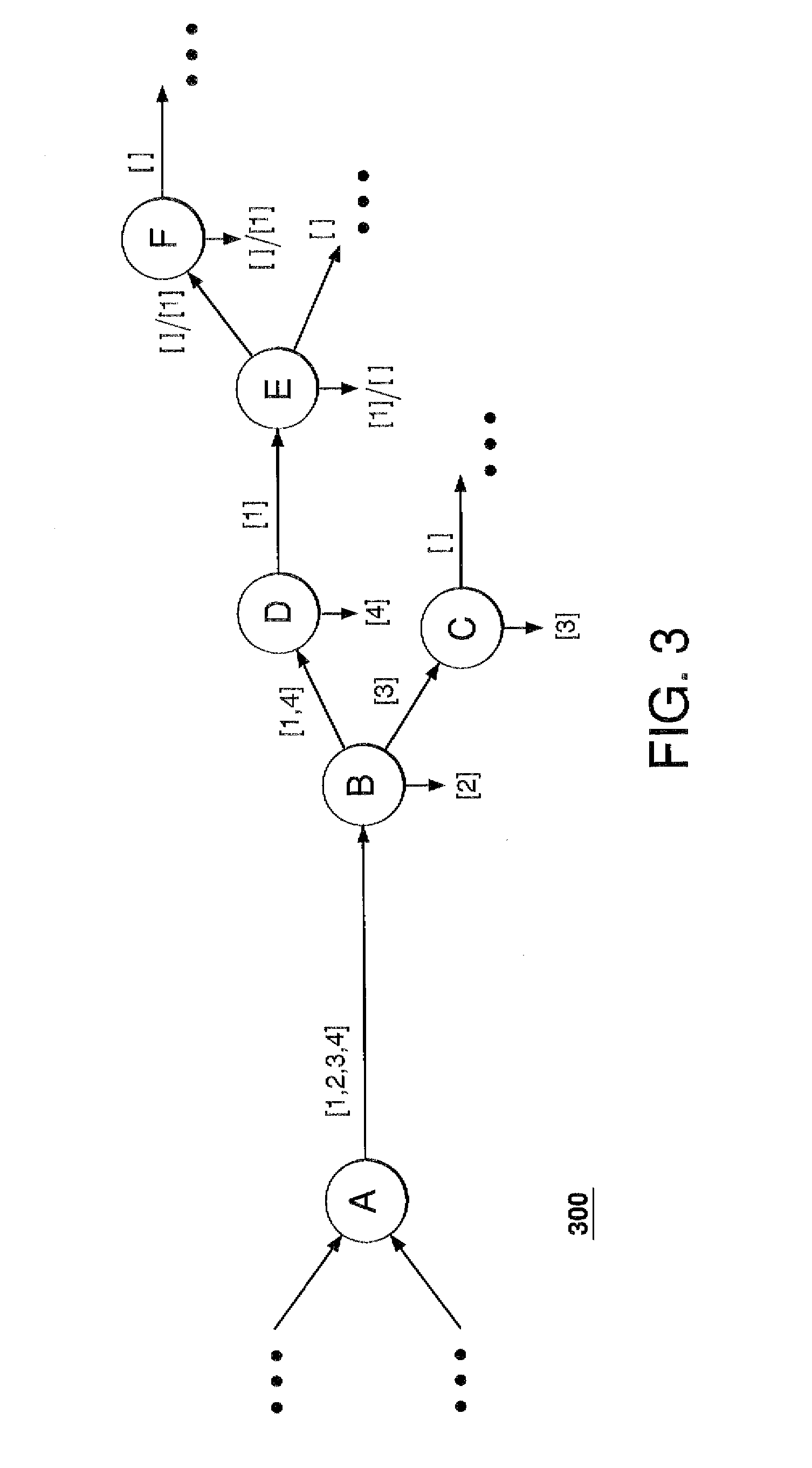Coordination of control operations in an optical network
a technology of optical network and control operation, applied in the field of optical communication system, can solve the problems of limiting the available network topologies, difficult to determine what constitutes a ring or a line, and increasing the arbitraryity of subdivisions, so as to reduce unfavorable interactions
- Summary
- Abstract
- Description
- Claims
- Application Information
AI Technical Summary
Benefits of technology
Problems solved by technology
Method used
Image
Examples
Embodiment Construction
[0018]FIG. 1 shows an optically transparent network 100 according to one embodiment. Network 100 has a plurality of nodes 102 connected by a plurality of communication links 104 as indicated in FIG. 1. Each node 102 is adapted to send and / or receive optical communication signals via the corresponding communication links 104, with each communication link having an optical fiber configured to transmit optical communication signals in one or both directions. If node 102 is a source node for an optical signal, then that signal is added to the optical signals transmitted by the node and coupled into an appropriate communication link 104. If node 102 is a destination node for a received optical signal, then that signal is dropped at that node. If node 102 is a transit node for a received optical signal, then that signal is coupled into an appropriate communication link 104 for further transmission to the signal's destination node.
[0019]FIG. 2 shows an amplifier block 200 that can be used ...
PUM
 Login to View More
Login to View More Abstract
Description
Claims
Application Information
 Login to View More
Login to View More - R&D
- Intellectual Property
- Life Sciences
- Materials
- Tech Scout
- Unparalleled Data Quality
- Higher Quality Content
- 60% Fewer Hallucinations
Browse by: Latest US Patents, China's latest patents, Technical Efficacy Thesaurus, Application Domain, Technology Topic, Popular Technical Reports.
© 2025 PatSnap. All rights reserved.Legal|Privacy policy|Modern Slavery Act Transparency Statement|Sitemap|About US| Contact US: help@patsnap.com



